Steel & Oak Brewing Co.
Château Léoville-Las Cases
Grand Vin de Leoville du Marquis de las Cases Saint-Julien Red Bordeaux Blend 2005
In my mind, there’s no better way to celebrate another trip around the sun than with loved ones, watching the sunset, while sharing a delicious meal and wine pairing. This evening hits the mark!
This wine is a 2nd growth Saint-Julien from the Médoc, left bank, region of Bordeaux, France. When I say 2nd growth, that means the Château from which this wine hails received the second highest quality designation as of part of the “1855 Classification” that took place during the Universal Expedition in Paris in 1855. This quality designation remains intact today despite the centuries that have passed.
This wine is clear with a deep ruby hue and garnet rim variation. On the nose this wine has medium intensity(+) of developing aromas with a large focus on blackberry, fig, cassis, prune, potpourri, incense, anise, cedar, vanilla, clove, nutmeg, earth, leather, and tobacco. On the palate this wine is dry. It has medium acidity, a medium(+) body, medium alcohol, high tannins, and medium intensity in flavors consistent with the nose. The finish is long.
Interestingly, the fermentation took place in various vessels, including those made from oak, steel, and concrete and then this wine aged in oak barriques (small oak vessels) until it was ready for bottling.
It was also cellared at the Château from harvest until shipping in 2015.
Château Léonville, Grand Vin de Léonville du Marquis de Las Cases, Saint-Julien, Médoc. Vintage 2005. ABV 13%.
This wine has complexity, balance, structure, and length. It’s outstanding. I’m not surprised to see a 100-point rating from Wine Spectator. Thank you @Deke for the amazing Birthday selection! — 4 years ago

Matchbook Wine Co.
The Arsonist Chardonnay 2017
Wonderful strong pear nose, edges of oak. Sipped caramel, slight hot sugar cookie notes. Really great chard. — 6 years ago
Badet Clément & Co.
Pontificis Grenache Blend 2015
This wine’s bouquet brings to the fore memories of the sea. Once I take a sip, I picture a tapas restaurant with mahogany paneling, ambience lighting, and linen tablecloths.
At first taste, well-balanced. Perfect rich and tart berry flavors with a hint of natural vanilla and oak. Not too tannic and light & bouncy on the tongue. For me, I would love this with whitefish ceviche, tacos, and/or pasta.
Versatile and affordable.
Reminds me of a platitude I live by in terms of wine (and life), “If it tastes good, drink it.” I can still hear Larry, the spectacled, fourth generational New Yorker yell from behind the counter, bottles stacked on cardboard boxes, of his boutique downtown wine shop on Maiden Lane.
$6.99 — Trader Joe’s — 7 years ago
Stave & Steel
Bourbon Barrel Aged Paso Robles Cabernet Sauvignon 2015
The Tannins in this wine really come through. Great wine for the price if you like a deep oak wine. — 8 years ago
NOTSO Wine Co.
Phigment California Red Blend 2018
Color of bubbly purple, quite dark. Nose of dark fruits (cherry, currants, blackberry), aldehyde, tobacco leaves, powerful alcohol, not too shabby. Taste of ample acidity, plentiful tannins, oak, spicy sweetness, ripe grapes, and indeed some warm bourbon like note. Aftertaste of more warmth, note tobacco note, some more zesty and sweet note. I am quite happy with it. I am quite happy with this 2nd bottle even though the notes are slightly different. — 4 years ago
Billecart-Salmon
Cuvée Nicolas François Billecart Brut Champagne Blend 2006
The 2006 Cuvée Nicolas François Billecart is shaping up to be a jewel of a wine, but it needs time to be at its best. I am surprised by how tightly wound it is. But that only makes me think what it might develop into with time in the cellar. Lemon confit, white flowers, mint, crushed rocks and sage meld together in a bright, crystalline Champagne endowed with terrific purity. The 2006 is 60% Pinot Noir from the Montagne de Reims and the Vallée de la Marne and 40% Chardonnay from the Côte des Blancs, mostly done in steel, with just a touch of oak, around 5%. Dosage is 6 grams per liter. (Originally published in August 2020) (Antonio Galloni, Vinous, November 2020) — 5 years ago
Massican
Napa Valley Sauvignon Blanc 2016
straw yellow, glints of green, pale watery rim; aromatic, grapefruit, honeydew melon, freshly cut grass, subtle oak; medium body, dry, crisp acidity, 13.8% ABV; made by Dan Petroski who makes Cabernet Sauvignon for Larkmead, 100% Sauvignon Blanc, fermented 70% in stainless steel, sourced from Juliana Vineyard in Pope Valley in Napa Valley, vines originally planted in 1993 for Robert Monday to produce their Napa Valley Fumé Blanc; $30 — 6 years ago
Bedrock Wine Co.
Old Vine Zinfandel
The 2017 Zinfandel Old Vine is gorgeous. Fresh, floral and beautifully perfumed, it is light on its feet yet delivers tons of flavor intensity. Super-ripe red cherry, red plum, cedar, tobacco and floral notes are all pushed forward. Silky tannins add to the wine's considerable appeal. The 2017 was aged 60% in foudres of various sizes and 40% in smaller French oak barrels. (Antonio Galloni, Vinous, May 2019) — 6 years ago
La Jota Vineyard Co.
Howell Mountain Cabernet Sauvignon 2015
The 2015 Cabernet Sauvignon by La Jota is a seductive blend of 75% Cabernet Sauvignon, 8.5% Cabernet Franc, 7.5% Merlot, 6% Malbec and 3% Petit Verdot which was aged for 22 months in 65% new French oak prior to bottling. Needing more than a two hour decant at this juncture, the wine takes on glorious creme de cassis, Turkish coffee, blueberry cordial and wild thyme aromatics. The palate shows marvelous complexly and range. Black tea, blueberry compote, mocha and blackberry pie flavors all beautifully mingle in the glass. Rich and layered, this hedonistic effort will cellar marvelously for decades. Be sure to give this at least a two hour decant if enjoying in its youth. Drink 2020-2045- 95 — 7 years ago
Intrinsic Wine Co.
Columbia Valley Cabernet Sauvignon
Smooth, jammy, hint of butterscotch, oak and blackberry. Earthy finish (not bitter or alcoholy) — 7 years ago
Road 31 Wine Co.
Napa Valley Pinot Noir 2015
Present oak and violet on nose, lively acidity with chocolate cherries on the tongue. A great California style Pinot. Let it breathe a bit for best results. — 8 years ago
Bedrock Wine Co.
Dolinsek Ranch Heritage Red Blend 2013
Though the brutal TX heat is back, it means plenty of time for grilling, and this was a fun red blend to pair with burgers.
A fun field blend where everything but the kitchen sink seems to be in here…mostly zin, with 6-7 lesser known varietals. A bit funky upon opening (pop and pour), this opened to reveal a brambly, tobacco leaf, weightless yet jammy profile. Soft and supple mixed fruits aromatically (mostly red and black fruits), with some added woody notes (more earthy than oak driven). The mid palate here reminds you this is zin to its core with plenty of black cherry compote and then the vibrant acidity driven finish sports some black pepper and spicy rhubarb. Mostly integrated at this point, I think this is at its apex. — 4 years ago
Clos du Val Wine Co.
Estate Napa Valley Cabernet Sauvignon 2015
Beautiful silky tannins. Oak. Cherry. Mighty fine find! — 5 years ago
Clos du Val Wine Co.
Reserve Napa Valley Cabernet Sauvignon 2008
Opaque dark violet with clear meniscus.. couldn’t have told this is 12 yrs old looking at the wine in the glass. Medium viscosity. oak-spiced, red and blue fruit, chocolate, tobacco and floral pastille aromas. Mocha and vanilla flourish. Plush, velvety and broad mouthfeel, it offers sweet cassis and blackberry flavors with a long spice and oak finish. Rich and energetic in style, medium acidity, resolved medium minus tannins and medium alcohol. Delicious expression of a high quality CA cab. I like this much better than bold and high ABV CA cabs. This was 14% ABV. — 5 years ago
Cedar Knoll Vineyard Co (Palmaz)
Hagen's Reserve Cabernet Sauvignon 2015
A great Cabernet from Napa Valley. Showing red and black fruits with earth, tobacco, vanilla, licorice, spices and Cedar.
Good right out of the bottle and better as it opens up (a couple of hours).
Aged for 24 months in French oak barrels. A blend of Cabernet, Merlot, Petit Verdot and Cabernet Franc.
Still young and needs 5 to 10 years of bottle time.
14.5% alcohol by volume.
91 points.
$80. — 7 years ago
Pali Wine Co.
Summit Sta. Rita Hills Pinot Noir 2013
Currants, dried strawberries, and dark cherries, with spice, oak, and I think even a little cocoa, maybe orange peel too. This is darker and deeper than a lot of west coast Pinots. The acidity is pretty strong and balanced the dark fruit well. Tannins are moderate to light. I had this with salmon, roasted potatoes, and cabbage cooked in duck fat. The salmon was farmed and a little too light for the wine, but cabbage in duck fat was a treat with this. — 7 years ago
Château Brane-Cantenac
Grand Cru Classé en 1855 Margaux Red Bordeaux Blend 2005
I have a six-pack of this 05. I thought after 10 years in bottle, it would be interesting to check in on its evolution. While tasty, I’ll wait another 8-10 to open another. Even after 2-3 hours in the decanter, it’s still a very young adolescent. On the nose, slightly sour blackberries & dark cherries, dark currants, baked black plum, haunting blue fruits, anise, whiff of spice, steeped tea, dry stones, dry crushed rocks with dry top soil, caramel, vanilla with fresh & dry red florals. The body is thick & full. Tannins are starting to round out. It’s velvety on the palate. The fruits are; bright, fresh & ripe and really show the greatness of the 05 vintage. Dark currants, blackberries, dark cherries, baked black plum, haunting blue fruits, baked strawberries, cherries, raspberries on the long set, dark spice, clay & loamy dry top soil with crushed rocks, dry stones, cigar with ash, graphite, dry stems, slight herbaceous character, mint, used leather, clove, caramel, vanilla, fresh & dry red florals with violets. The round acidity is about perfect. The structure and length are still strong. The balance is in harmony. As for the long finish, it’s lush, ruby, rich and well polished. Photos of; Chateau Brane Cantenac, large wood vats, Henri Lurton and Estate vines. Producer notes and history...Chateau Brane Cantenac began in the early 17th century. At the time, the estate was known as Domaine Guilhem Hosten. Even that far back, wine was produced from the property. In fact, the wine was so highly regarded it was one of the more expensive wines in Bordeaux. It sold for almost as much money as Brane Mouton. This is interesting because of who went on to buy the vineyard in the 1800’s. The Baron of Brane, also known as “Napoleon of the Vineyards”, purchased the Chateau in 1833. At the time of the sale, the estate was called Chateau Gorce-Guy. To get the funds needed to purchase the Margaux vineyard, the Baron sold what is now called Mouton Rothschild, which was at the time of the sale, known as Chateau Brane-Mouton. Not such a good move with hundreds of years in hindsight! In 1838, the Baron renamed property taking his name and the name of the sector where the vineyards were located and called it Chateau Brane Cantenac. The Chateau later passed to the Roy family, who were well-known in the Margaux appellation in those days, as they owned Chateau d’issan. Moving ahead to 1920, the Societe des Grands Crus de France, a group of merchants and growers that owned several chateaux located in the Medoc including; Chateau Margaux, Chateau Giscours, and Chateau Lagrange in St. Julien, purchased Chateau Brane Cantenac. Five years later, M. Recapet and his son-in-law, François Lurton, took over Brane Cantenac along with Chateau Margaux. Lucien Lurton (the son of François Lurton) inherited Brane Cantenac in 1956. Today, the estate is still in the hands of the Lurton family. Brane Cantenac is owned and run by Henri Lurton. After being given the responsibility of managing Brane Cantenac, it was under the direction of Henri Lurton that large portions of the vineyard were replanted. Vine densities were increased, the drainage systems were improved and the plantings were also, slowly changed. The vineyard of Brane Cantenac is planted to 55% Cabernet Sauvignon, 40% Merlot, 4.5% Cabernet Franc and .5% Carmenere. Carmenere was used for the first time in the 2011 vintage. The only other Chateau I know that still uses Carmenere is Clerc Milon. The 75 hectare Left Bank vineyard of Brane Cantenac is essentially unchanged since it earned Second Growth status in the 1855 Classification. At least that is the case with the 45 hectares used to produce the Grand Vin of Brane Cantenac. Those 45 hectares are planted surrounding the Chateau. Those vines are located just in front of the Cantenac plateau and are the best terroir that Brane Cantenac owns. They have other parcels, which are further inland and much of those grapes are placed into their second wine, Le Baron de Brane. Those additional hectares can be divided into 3 main sections. Behind the Chateau, they have 15 hectares of vines on gravel and sand, 10 hectares across the road with sand, gravel and iron and a 13 hectare parcel with gravel called Notton, which is used for their second wine. The vineyard is planted to a vine density that ranges from 6,666 vines per hectare on the plateau and up to 8,000 vines per hectare for the vines located behind chateau, in their sandier soils. The higher levels of vine density are always found in the newer plantings. The terroir of Brane Cantenac consists of deep gravel, sand and clay soil. Experiments in the vineyards are currently looking at becoming more organic in their vineyard management. Today, more than 25% of Brane Cantenac is farmed using organic farming techniques. It is expected that over time, the amount of hectares farmed with organic methods will be increased. Brane Cantenac has gone through 2 relatively recent modernization’s in 1999, when they added began adding the first of their smaller vats to allow for parcel by parcel vinification and then again in 2015 when they completed a much more complete renovation of their cellars and vat rooms. While Brane Cantenac is a traditional producer, they are no stranger to technology as they were one of the first estates to embrace optical grape sorting machines. In very wet vintages, they can also use reverse osmosis. To produce the wine of Chateau Brane Cantenac, the wine is vinified in a combination of temperature controlled, traditional, 22 oak vats, 18 concrete tanks and 20 stainless steel vats that vary in size from 40 hectoliters all the way up to 200 hectoliters, which allows for parcel by parcel vinification. 40% of the fermentation takes place in the oak vats. The oldest vines are vinified in vats that are selected to allow for separate parcel by parcel vinification. The younger vines are vinified more often together in the same vats. However, the Carmenere is entirely micro-vinified, meaning that those grapes were completely vinified in barrel, using micro-vinification techniques. This can also happen because the amount of grapes produced is so small. Some vats can be co-inoculated, meaning they go through alcoholic fermentation and malolactic fermentation simultaneously. At Chateau Brane Cantenac, malolactic fermentation takes place in a combination of French oak tanks and barrels. The wine of Brane Cantenac is aged in an average of 60% new, French oak barrels for 18 months before bottling. The initial 2 months of aging is done with the wine on its lees, which adds more depth to the wine. There second wine is Le Baron de Brane. Le Baron de Brane is not new. In fact, previously, the second wine went under the name of Chateau Notton, which took its name from one of the main parcels where the grapes were planted. During the late 1950’s and into the 1960’s, having a second wine was important as the estate declassified 3 vintages, due to extremely poor, weather conditions in 1956, 1960 and 1963. Production of Chateau Brane Cantenac is about 11,000 cases per year. — 8 years ago
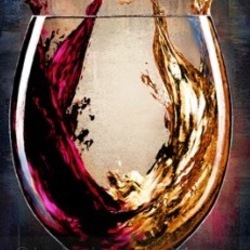







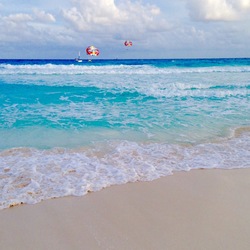
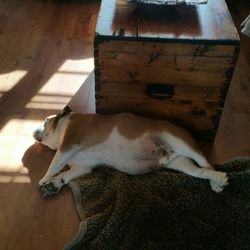
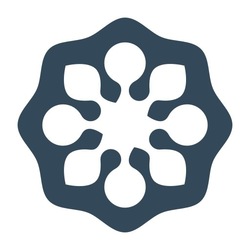


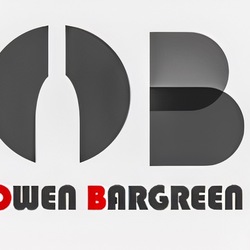
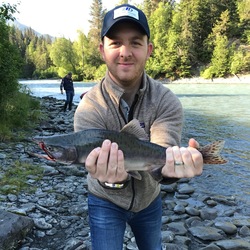





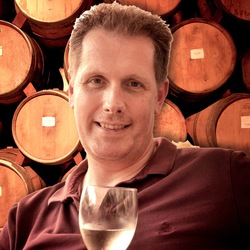
Stefan Dolhain
2018 vintage. Co-owned by Stephan von Neipperg (La Mondotte and Canon La Gaffelière in Saint-Emilion). A blend of 55% Cabernet Sauvignon and 45% Merlot. Very attractive nose with black cherries, blackberries and strawberry marmelade, mixed with smokey oak and Provence herbs. Medium to full-bodied, with concentrated black fruit, smooth tannin and great spicy length. Super sexy hedonistic Bordeaux. Amazing value too. Highly recommended. — 4 years ago